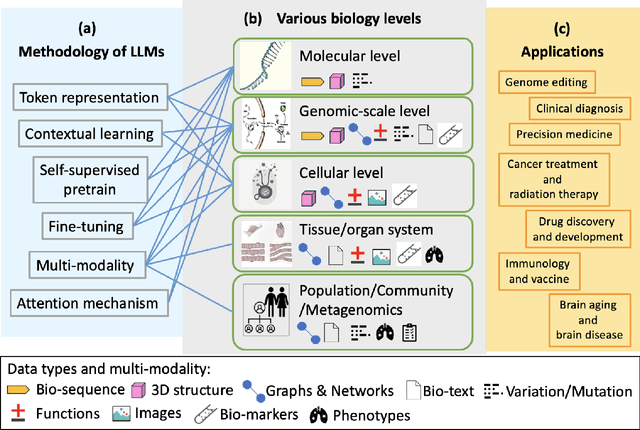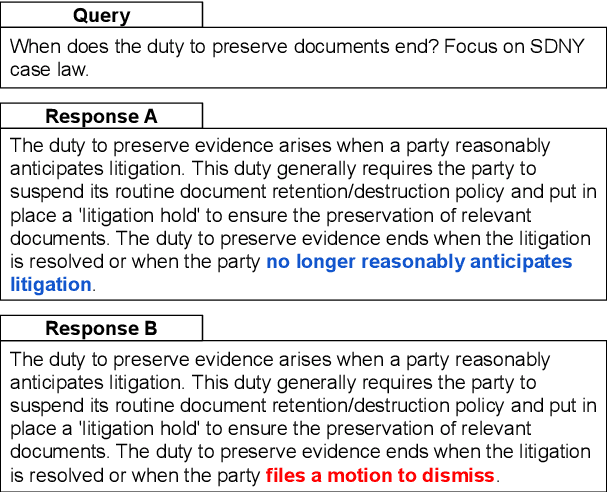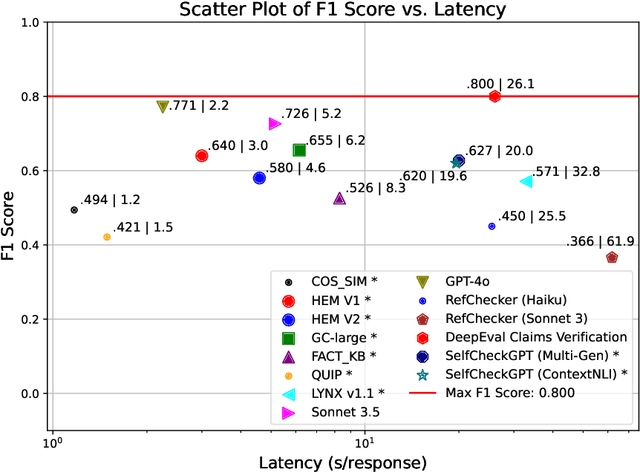Shang Gao
BioD2C: A Dual-level Semantic Consistency Constraint Framework for Biomedical VQA
Mar 04, 2025Abstract:Biomedical visual question answering (VQA) has been widely studied and has demonstrated significant application value and potential in fields such as assistive medical diagnosis. Despite their success, current biomedical VQA models perform multimodal information interaction only at the model level within large language models (LLMs), leading to suboptimal multimodal semantic alignment when dealing with complex tasks. To address this issue, we propose BioD2C: a novel Dual-level Semantic Consistency Constraint Framework for Biomedical VQA, which achieves dual-level semantic interaction alignment at both the model and feature levels, enabling the model to adaptively learn visual features based on the question. Specifically, we firstly integrate textual features into visual features via an image-text fusion mechanism as feature-level semantic interaction, obtaining visual features conditioned on the given text; and then introduce a text-queue-based cross-modal soft semantic loss function to further align the image semantics with the question semantics. Specifically, in this work, we establish a new dataset, BioVGQ, to address inherent biases in prior datasets by filtering manually-altered images and aligning question-answer pairs with multimodal context, and train our model on this dataset. Extensive experimental results demonstrate that BioD2C achieves state-of-the-art (SOTA) performance across multiple downstream datasets, showcasing its robustness, generalizability, and potential to advance biomedical VQA research.
KARST: Multi-Kernel Kronecker Adaptation with Re-Scaling Transmission for Visual Classification
Feb 10, 2025Abstract:Fine-tuning pre-trained vision models for specific tasks is a common practice in computer vision. However, this process becomes more expensive as models grow larger. Recently, parameter-efficient fine-tuning (PEFT) methods have emerged as a popular solution to improve training efficiency and reduce storage needs by tuning additional low-rank modules within pre-trained backbones. Despite their advantages, they struggle with limited representation capabilities and misalignment with pre-trained intermediate features. To address these issues, we introduce an innovative Multi-Kernel Kronecker Adaptation with Re-Scaling Transmission (KARST) for various recognition tasks. Specifically, its multi-kernel design extends Kronecker projections horizontally and separates adaptation matrices into multiple complementary spaces, reducing parameter dependency and creating more compact subspaces. Besides, it incorporates extra learnable re-scaling factors to better align with pre-trained feature distributions, allowing for more flexible and balanced feature aggregation. Extensive experiments validate that our KARST outperforms other PEFT counterparts with a negligible inference cost due to its re-parameterization characteristics. Code is publicly available at: https://github.com/Lucenova/KARST.
Large Language Models for Bioinformatics
Jan 10, 2025
Abstract:With the rapid advancements in large language model (LLM) technology and the emergence of bioinformatics-specific language models (BioLMs), there is a growing need for a comprehensive analysis of the current landscape, computational characteristics, and diverse applications. This survey aims to address this need by providing a thorough review of BioLMs, focusing on their evolution, classification, and distinguishing features, alongside a detailed examination of training methodologies, datasets, and evaluation frameworks. We explore the wide-ranging applications of BioLMs in critical areas such as disease diagnosis, drug discovery, and vaccine development, highlighting their impact and transformative potential in bioinformatics. We identify key challenges and limitations inherent in BioLMs, including data privacy and security concerns, interpretability issues, biases in training data and model outputs, and domain adaptation complexities. Finally, we highlight emerging trends and future directions, offering valuable insights to guide researchers and clinicians toward advancing BioLMs for increasingly sophisticated biological and clinical applications.
Computer Vision-Driven Gesture Recognition: Toward Natural and Intuitive Human-Computer
Dec 24, 2024Abstract:This study mainly explores the application of natural gesture recognition based on computer vision in human-computer interaction, aiming to improve the fluency and naturalness of human-computer interaction through gesture recognition technology. In the fields of virtual reality, augmented reality and smart home, traditional input methods have gradually failed to meet the needs of users for interactive experience. As an intuitive and convenient interaction method, gestures have received more and more attention. This paper proposes a gesture recognition method based on a three-dimensional hand skeleton model. By simulating the three-dimensional spatial distribution of hand joints, a simplified hand skeleton structure is constructed. By connecting the palm and each finger joint, a dynamic and static gesture model of the hand is formed, which further improves the accuracy and efficiency of gesture recognition. Experimental results show that this method can effectively recognize various gestures and maintain high recognition accuracy and real-time response capabilities in different environments. In addition, combined with multimodal technologies such as eye tracking, the intelligence level of the gesture recognition system can be further improved, bringing a richer and more intuitive user experience. In the future, with the continuous development of computer vision, deep learning and multimodal interaction technology, natural interaction based on gestures will play an important role in a wider range of application scenarios and promote revolutionary progress in human-computer interaction.
Hyperbolic Chamfer Distance for Point Cloud Completion and Beyond
Dec 23, 2024Abstract:Chamfer Distance (CD) is widely used as a metric to quantify difference between two point clouds. In point cloud completion, Chamfer Distance (CD) is typically used as a loss function in deep learning frameworks. However, it is generally acknowledged within the field that Chamfer Distance (CD) is vulnerable to the presence of outliers, which can consequently lead to the convergence on suboptimal models. In divergence from the existing literature, which largely concentrates on resolving such concerns in the realm of Euclidean space, we put forth a notably uncomplicated yet potent metric specifically designed for point cloud completion tasks: {Hyperbolic Chamfer Distance (HyperCD)}. This metric conducts Chamfer Distance computations within the parameters of hyperbolic space. During the backpropagation process, HyperCD systematically allocates greater weight to matched point pairs exhibiting reduced Euclidean distances. This mechanism facilitates the preservation of accurate point pair matches while permitting the incremental adjustment of suboptimal matches, thereby contributing to enhanced point cloud completion outcomes. Moreover, measure the shape dissimilarity is not solely work for point cloud completion task, we further explore its applications in other generative related tasks, including single image reconstruction from point cloud, and upsampling. We demonstrate state-of-the-art performance on the point cloud completion benchmark datasets, PCN, ShapeNet-55, and ShapeNet-34, and show from visualization that HyperCD can significantly improve the surface smoothness, we also provide the provide experimental results beyond completion task.
SPADE: Spectroscopic Photoacoustic Denoising using an Analytical and Data-free Enhancement Framework
Dec 16, 2024



Abstract:Spectroscopic photoacoustic (sPA) imaging uses multiple wavelengths to differentiate chromophores based on their unique optical absorption spectra. This technique has been widely applied in areas such as vascular mapping, tumor detection, and therapeutic monitoring. However, sPA imaging is highly susceptible to noise, leading to poor signal-to-noise ratio (SNR) and compromised image quality. Traditional denoising techniques like frame averaging, though effective in improving SNR, can be impractical for dynamic imaging scenarios due to reduced frame rates. Advanced methods, including learning-based approaches and analytical algorithms, have demonstrated promise but often require extensive training data and parameter tuning, limiting their adaptability for real-time clinical use. In this work, we propose a sPA denoising using a tuning-free analytical and data-free enhancement (SPADE) framework for denoising sPA images. This framework integrates a data-free learning-based method with an efficient BM3D-based analytical approach while preserves spectral linearity, providing noise reduction and ensuring that functional information is maintained. The SPADE framework was validated through simulation, phantom, ex vivo, and in vivo experiments. Results demonstrated that SPADE improved SNR and preserved spectral information, outperforming conventional methods, especially in challenging imaging conditions. SPADE presents a promising solution for enhancing sPA imaging quality in clinical applications where noise reduction and spectral preservation are critical.
GSSF: Generalized Structural Sparse Function for Deep Cross-modal Metric Learning
Oct 20, 2024Abstract:Cross-modal metric learning is a prominent research topic that bridges the semantic heterogeneity between vision and language. Existing methods frequently utilize simple cosine or complex distance metrics to transform the pairwise features into a similarity score, which suffers from an inadequate or inefficient capability for distance measurements. Consequently, we propose a Generalized Structural Sparse Function to dynamically capture thorough and powerful relationships across modalities for pair-wise similarity learning while remaining concise but efficient. Specifically, the distance metric delicately encapsulates two formats of diagonal and block-diagonal terms, automatically distinguishing and highlighting the cross-channel relevancy and dependency inside a structured and organized topology. Hence, it thereby empowers itself to adapt to the optimal matching patterns between the paired features and reaches a sweet spot between model complexity and capability. Extensive experiments on cross-modal and two extra uni-modal retrieval tasks (image-text retrieval, person re-identification, fine-grained image retrieval) have validated its superiority and flexibility over various popular retrieval frameworks. More importantly, we further discover that it can be seamlessly incorporated into multiple application scenarios, and demonstrates promising prospects from Attention Mechanism to Knowledge Distillation in a plug-and-play manner. Our code is publicly available at: https://github.com/Paranioar/GSSF.
Measuring the Groundedness of Legal Question-Answering Systems
Oct 11, 2024



Abstract:In high-stakes domains like legal question-answering, the accuracy and trustworthiness of generative AI systems are of paramount importance. This work presents a comprehensive benchmark of various methods to assess the groundedness of AI-generated responses, aiming to significantly enhance their reliability. Our experiments include similarity-based metrics and natural language inference models to evaluate whether responses are well-founded in the given contexts. We also explore different prompting strategies for large language models to improve the detection of ungrounded responses. We validated the effectiveness of these methods using a newly created grounding classification corpus, designed specifically for legal queries and corresponding responses from retrieval-augmented prompting, focusing on their alignment with source material. Our results indicate potential in groundedness classification of generated responses, with the best method achieving a macro-F1 score of 0.8. Additionally, we evaluated the methods in terms of their latency to determine their suitability for real-world applications, as this step typically follows the generation process. This capability is essential for processes that may trigger additional manual verification or automated response regeneration. In summary, this study demonstrates the potential of various detection methods to improve the trustworthiness of generative AI in legal settings.
A Little Confidence Goes a Long Way
Aug 20, 2024Abstract:We introduce a group of related methods for binary classification tasks using probes of the hidden state activations in large language models (LLMs). Performance is on par with the largest and most advanced LLMs currently available, but requiring orders of magnitude fewer computational resources and not requiring labeled data. This approach involves translating class labels into a semantically rich description, spontaneous symmetry breaking of multilayer perceptron probes for unsupervised learning and inference, training probes to generate confidence scores (prior probabilities) from hidden state activations subject to known constraints via entropy maximization, and selecting the most confident probe model from an ensemble for prediction. These techniques are evaluated on four datasets using five base LLMs.
Incremental Learning and Self-Attention Mechanisms Improve Neural System Identification
Jun 12, 2024Abstract:Convolutional neural networks (CNNs) have been shown to be the state-of-the-art approach for modeling the transfer functions of visual cortical neurons. Cortical neurons in the primary visual cortex are are sensitive to contextual information mediated by extensive horizontal and feedback connections. Standard CNNs can integrate global spatial image information to model such contextual modulation via two mechanisms: successive rounds of convolutions and a fully connected readout layer. In this paper, we find that non-local networks or self-attention (SA) mechanisms, theoretically related to context-dependent flexible gating mechanisms observed in the primary visual cortex, improve neural response predictions over parameter-matched CNNs in two key metrics: tuning curve correlation and tuning peak. We factorize networks to determine the relative contribution of each context mechanism. This reveals that information in the local receptive field is most important for modeling the overall tuning curve, but surround information is critically necessary for characterizing the tuning peak. We find that self-attention can replace subsequent spatial-integration convolutions when learned in an incremental manner, and is further enhanced in the presence of a fully connected readout layer, suggesting that the two context mechanisms are complementary. Finally, we find that learning a receptive-field-centric model with self-attention, before incrementally learning a fully connected readout, yields a more biologically realistic model in terms of center-surround contributions.
 Add to Chrome
Add to Chrome Add to Firefox
Add to Firefox Add to Edge
Add to Edge